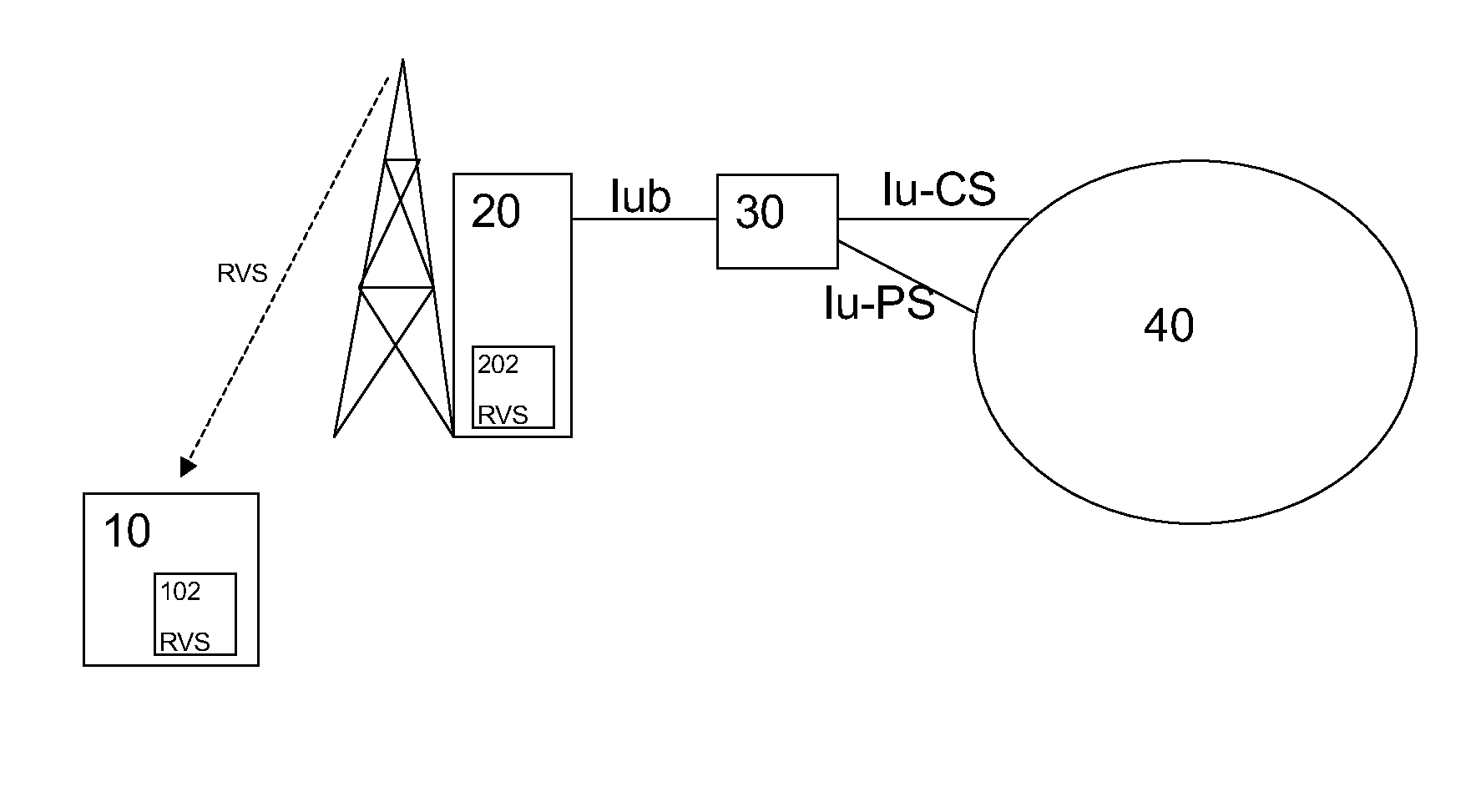Redundancy strategy selection scheme
a redundancy strategy and selection scheme technology, applied in the field of uplink transmissions, can solve the problems of inefficient transmission, significant delay, and terminal devices that do not independently select their own strategies, and achieve the effect of increasing flexibility in selection and reducing the load of signaling
- Summary
- Abstract
- Description
- Claims
- Application Information
AI Technical Summary
Benefits of technology
Problems solved by technology
Method used
Image
Examples
first embodiment
[0045] the RV strategies can be numbered, e.g., CC could have strategy number “0”, PIR could have the strategy number “1”, and FIR could have the strategy number “2”. Of course, also other strategies could be specified and correspondingly numbered. At the beginning of a connection, the RNC 30 may signal to the UE 10 the RV strategy to be used for the connection, using RRC signaling. Thus, if there are for example four different strategies specified, two bits are needed to signal the strategy using a binary information pattern.
[0046]The RV parameters used in the uplink direction can then be signaled outband by the UE 10, i.e., using an own signaling channel protected separately from the data. By specifying the individual RV strategies, the number of bits required for transmitting the RV parameters and thus the number of uplink outband information can be made dependent on the selected RV strategy. For instance, if the CC strategy is selected, no signaling is required for the RV parame...
second embodiment
[0047] the sequence or RV parameters to be used by the UE 10 is signaled to the UE 10 from the RNC 30 at the beginning or at set-up of the connection by using RRC signaling. The network may select a predetermined sequence to be used for this connection, e.g., a sequence of {0,1,2,4}. This second preferred embodiment provides the advantage that the network or network operator can define any sequence of RV parameters suitable for a specific application or network environment. However, in this case more bits have to be signaled. In the above example of eight different RV parameter combinations, three bits are required for each RV combination. Thus, if four RV combinations are specified for the sequence, then twelve bits are needed in total to specify the sequence.
third embodiment
[0048] the RV sequences can be specified in the network specification so as to be pre-configurable at the Node B 20 and the UE 10. The selected RV strategy can than be cell- or network-specific and can be broadcast on a common channel. The RV strategy is then the same for all UEs in the specific cell or network. If the reason for the use of a certain RV strategy is the Node B capability, for example, and therefore all UEs in the concerned cell should use the same RV strategy, then signaling capacity can be saved if the RV strategy is broadcast to all UEs at the same time.
[0049]FIG. 2 shows a schematic block diagram of a repeat request functionality 100 provided at the UE 10 with an adaptable or controllable RV parameter generating unit 102 which can be controlled based on the strategy information RS received from the network.
[0050]The repeat request functionality 100 can be used for the enhanced uplink DCH (E-DCH) channel or any other physical or transport channel and is configured ...
PUM
 Login to View More
Login to View More Abstract
Description
Claims
Application Information
 Login to View More
Login to View More - R&D
- Intellectual Property
- Life Sciences
- Materials
- Tech Scout
- Unparalleled Data Quality
- Higher Quality Content
- 60% Fewer Hallucinations
Browse by: Latest US Patents, China's latest patents, Technical Efficacy Thesaurus, Application Domain, Technology Topic, Popular Technical Reports.
© 2025 PatSnap. All rights reserved.Legal|Privacy policy|Modern Slavery Act Transparency Statement|Sitemap|About US| Contact US: help@patsnap.com


